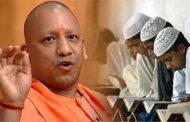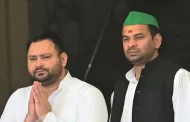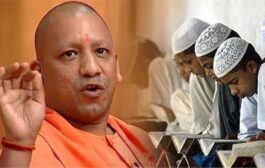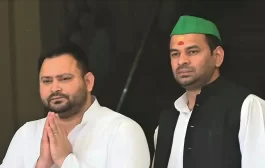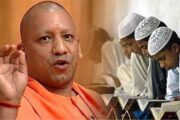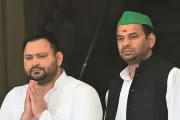The Wire’s Chief of Bureau, Raghu Karnad, speaks with Hartosh Singh Bal, political editor of the Caravan Magazine, and senior journalist Manoj Mitta, author of ‘When a Tree Shook Delhi’, revisit that dark period and discuss why neither national party has delivered justice yet.

This video was first published on November 3, 2018 and is being republished on December 18, 2018 in light of the Delhi high court’s verdict finding Congress leader Sajjan Kumar guilty.
Thirty-four years after the 1984 massacre of Sikhs in Delhi, and four years after the Narendra Modi government promised to punish the guilty, neither truth nor justice are within sight.
The Wire’s Chief of Bureau, Raghu Karnad, speaks with Hartosh Singh Bal, political editor of the Caravan Magazine, and senior journalist Manoj Mitta, author of ‘When a Tree Shook Delhi’, revisit that dark period and discuss why neither national party has delivered justice yet.
Raghu Karnad: Thirty four years ago, India experienced one of the worst outbreaks of organised violence in its modern history when the assassination of prime minister Indira Gandhi was followed by the murder of thousands of Sikh citizens in Delhi and in other parts of the country.
Today, the date 1984 is synonymous with justice delayed and thereby denied. In 2014, the government of Narendra Modi came to power on an election manifesto that promised to punish the guilty and bring closure to the victims of the violence. But they remain disappointed. To discuss what happened in November 1984 and what has failed to happen since then, we are here with two guests – Hartosh Singh Bal, the political editor at Caravan magazine who has written extensively about the violence of 1984, and Manoj Mitta, who is the author of two books about episodes of organised violence – one about the 2002 riots in Gujarat and one about the 1984 massacre titled When A Tree Shook Delhi.
Hartosh, we will begin with you. Can you give us a sense of the historical context of the events that preceded the assassination and the riots?
Hartosh Singh Bal: Why 1984 is important, apart from the question of justice, is that it has set in place the model of politics that has come to dominate India today. History of what happened actually goes back to the Emergency. The biggest opposition to Indira Gandhi during the Emergency came from the Akalis. As soon as the Emergency end, there was a one-point agenda between Sanjay (Gandhi) and Indira to bring down the Akalis. They found a man in (Jarnail Singh) Bhindranwale, who they would prop up. He went out of their hands and eventually they had to confront what they had created in Punjab and made the mess of it.
The planning of (Operation) Blue Star with people like Arun Nehru, Arun Singh, General K. Sunderji, and Rajiv and Indira involved, the idea was that a military victory would be a great way to go into the next elections. A military victory where a community could be targeted and branded in the same way that Muslims are branded today. You could see them organise a majoritarian project, a Hindu majoritarian project against one community. Blue Star happened and obviously the assassination was not part of it. But when the assassination happened, the violence was controlled and organised in this context. It was used in the same way that Blue Star would have been used.
RK: Speaking about the larger atmosphere of fear in which a minority was being demonised, Manoj, what do you recall of the 1980s and about that mobilisation of sentiment against Sikhs in that period?
Manoj Mitta: Since we are holding this conversation in 2018, it would be apt to recall that we had this episode of mass violence taking place right in the capital of the country under the nose of the central government, run by none other than the grandson of Jawaharlal Nehru – who symbolises secularism like nobody else in our country. It’s important to recall that because in today’s context, the binary is that Congress represents secularism and the BJP and its affiliates represent the other view. That is the reason why political scientists have very astutely observed that the Congress has a track record of being opportunistically communal while BJP is ideologically communal. So 1984 is the most egregious example of how the Congress had a record of stooping to such methods when it suited them politically.
The kind of voting that took place in that election meant that the Congress party, under Rajiv Gandhi, got a mandate that even his grandfather or his mother never got – 400-plus (seats) is a brute majority that nobody before or after got. And in that context, you had people like H.K.L Bhagat or Jagdish Tytler or Lalit Maken – who were all perceived to have been involved in the violence in some way or the other and in whose constituency there were extensive killings – were all rewarded in that election. Bhagat and Sajjan Kumar got massive majorities.
I must warn that we should use our language carefully. You loosely referred to it as riots. It is not an apt word to use because we are talking about what is clearly a pogrom. It happened right in the capital of the country and there was a grave provocation, but then we know from the experience of 1984 and other incidents that if the violence is not brought under control within a few hours, it clearly means that there is administrative and political complicity.
RK: Can you give us a sense of what the scene was on the ground in terms of how the police were acting and how politicians may have been responsible?
HSB: I think the story is pretty clear and we can add more details to it. It was organised centrally in every area of Delhi. Mobs were led by Congress leaders and it was almost as if Congress leaders were deputed. They were shouting the same slogans and were using the same methods of killing. It is impossible in spontaneous violence that you would get a uniform pattern of violence across the city without anybody coordinating. The same slogans, same methods of white powder – an inflammable substance, in all likelihood white phosphorous. It’s actually a banned substance under the Geneva Convention in terms of its use in war.
It would have been easy if any commission of inquiry was interested to find out where it would have come from. At that time, in 1984, not more than two or three factories would have been manufacturing white phosphorous, you would have easily tracked down where the trail came from.
Narsimha Rao was called up by several people and he put his hands up. The home minister of the country said that he had no control over what was happening and therefore could not intervene. My understanding is that the coordination was happening through Arun Nehru, who was in touch with Rajiv Gandhi, and there was messaging across the city to senior Congress leaders.
The police was just a handmaiden of the Congress party organising these riots. The only time the police intervened was to disarm Sikhs who were putting up resistance. The total death toll across the country was huge, but we must remember it was not just Delhi. Four thousand people died in Delhi and about an equal people died outside Delhi as well. Across all of the Hindi belt, you had killings. In East Delhi alone, in single Trilokpuri, 400 people killed in two blocks. In Kalyanpuri, 200 more were killed. Over a thousand people killed in East Delhi and 26 people were arrested. All 26 arrested were Sikhs.
What happens afterwards, unlike 2002 – and I don’t want to do a comparison because it was horrendous – militancy was underway in Punjab. So the monitoring of the process of bringing justice didn’t happen even through the media or the liberal intelligenstia. To use a term current now, it was implicit then, that it would have been anti-national to report the failings of the justice process because that was the excuse that the militancy in Punjab was using. They said that justice had been denied to them and that’s why they took up arms. So from almost 1984 onwards, for a handful of reporters, the media abdicated its responsibility to look at how the commissions failed to follow any reasonable process of justice.
RK: Manoj, you have written a book with senior advocate H.S. Phoolka, who is one of leaders of the movement and the campaign for justice for the victims. And that book takes a holistic view and kind of integrates the findings of many of the reports that have washed up like waves following investigations into the violence. Can you give us a sense of what the record of governments is in actually prosecuting perpetrators?
MM: In this three odd decades, there have been about dozen committees and commissions and it is unusual for a single episode to be enquired into by two commissions of enquiry. That had to happen here because the first commission of inquiry was headed by a sitting judge of the Supreme Court, Ranganath Misra, who went on to become chief justice of India and ironically the first chairman of the National Human Rights Commission. The fact that that man indulged in a very blatant cover up is evident from some of his actions that are very hard to believe today. Here was a commission that was setup six months after the violence took place because the then administration was bent on milking it politically.
So after they finished holding a Lok Sabha elections within a couple of months of the carnage in Delhi and elsewhere, they waited for a round of assembly elections in several states to take place. And it is only after they won those two rounds of polling did they actually concede this demand of holding an enquiry and that too because the then Akali leader Harchand Singh Longowal put it as a pre-condition for entering into any talks. When he finally conceded this demand, a sitting judge of the Supreme Court shamelessly played this very dubious game of the executive. He announces, without any justification whatsoever, that the entire enquiry would be held in camera.
Now this violates one of the most basic tenets of any credible judicial process – that hearings have to be held in public. The public should be allowed to come and it should be reported on a real-time basis. That is what will lend it credibility and that is what will give a sense of assurance to the victims and the concerned people that some justice is being done. The whole process was shrouded in secrecy and what came out of it was a shameless whitewash. And because it was something that the government, despite its brute majority in parliament, would have found it hard to justify, they did not even allow any discussion on it. And when 2002 happened, there wasn’t much for the BJP to go by because it was a case of a pot calling a kettle black.
RK: Coming back to the Vajpayee government…
MM: They ordered, in an unprecedented move, a fresh enquiry and that is how the Justice Nanvati commission was set up. The irony is the same Nanavati shortly thereafter was appointed to enquire into the 2002 violence. There he was behaving more like Mishra behaved in 1986. Even as we speak in 2018, we are yet to see the Nanavati Commission’s report on the 2002 violence, the post Godhra violence. We are yet to see that report. All we have so far is the first instalment of it, which was limited to the Godhra violence. The post-Godhra violence – the retaliatory killings of Muslims that happened across Gujarat – that report has still not been made public.
So in the context of 1984, he did a more credible inquiry. He held a enquiry in the public domain and a lot of reports that were not made public earlier came into the public domain for the first time and that was how the post-Nanavati report Phoolka and I put together on the basis of all the documentation became available after almost two decades.
RK: Thank you very much for your efforts in actually improving and sharing that documentation with the wider readership. Hartosh, coming back to you. Under the present government, where we’d expect a very vigorous prosecution of everyone who is being implicated in the violence 34 years ago, it doesn’t seem like that is actually being delivered. Jagdish Tytler, whose name has now become synonymous with the riots, has received another clean chit from the CBI and SIT that was formed in 2015 and which was announced by Modi just before the Delhi election but was formed in 2015, has recommended that 12 of the cases be re-opened out of something like 290. Without getting into the technicalities, what is your reading of what this investigation means to the present government?
HSB: Look at the larger picture. It is not just the present government, we should also look at the present opposition – which is the Congress in the current context. It would be wrong to say one would have expected a vigorous investigation. It is clear from the background we have spoken about that no government would actually do a clear investigation. Investigating 1984 also reflects on the lack of the investigation in 2002.
Let me point out one simple thing. On October 31, you can look at the Twitter handles of both Rahul Gandhi and Narendra Modi. This is the pattern from the time Rahul Gandhi started his Twitter activity four years ago, as well as when Narendra Modi created his account. There will be message about the death of Indira Gandhi. From November 1 to November 3, 8,000 citizens of this country were killed. There is not a single tweet either by Rahul or Narendra Modi.
You have to understand why Narendra Modi is not tweeting. He does not dare to talk about this; he does not dare to prosecute. That SIT was set-up to preempt an SIT by the AAP government which would actually have been independent of the control of the BJP or the Congress. Finally, the court said to intervene and say this SIT hasn’t done its job, Modi was as interested in suppressing the truth of 1984 as the Congress is. What is also equally important is also equally important that if you look at the opposition, please do not think that the history of the Congress that 1984 has lied suppressed in the past, it is a live today in the Congress.
Kamal Nath, is leading the campaign in Madhya Pradesh for the Congress. He is directly indicted in the one clear case of a man leading a mob that burnt people to death right next to parliament. The party gains its profits from 1984 and will never make its excuses for it. It may pretend otherwise, but the simple fact that 1984 was directed from the top down indicts the Gandhi family and the Congress will never be able to walk away from it. So in that sense, the opposition and the current administration both are implicit in the separation of truth in the case.
RK: That troubling note leaves us with an explanation of how things have played out so far and what to expect for the campaign for justice for the victims of 1984. Thank you Hartosh and Manoj.
source: TheWire



